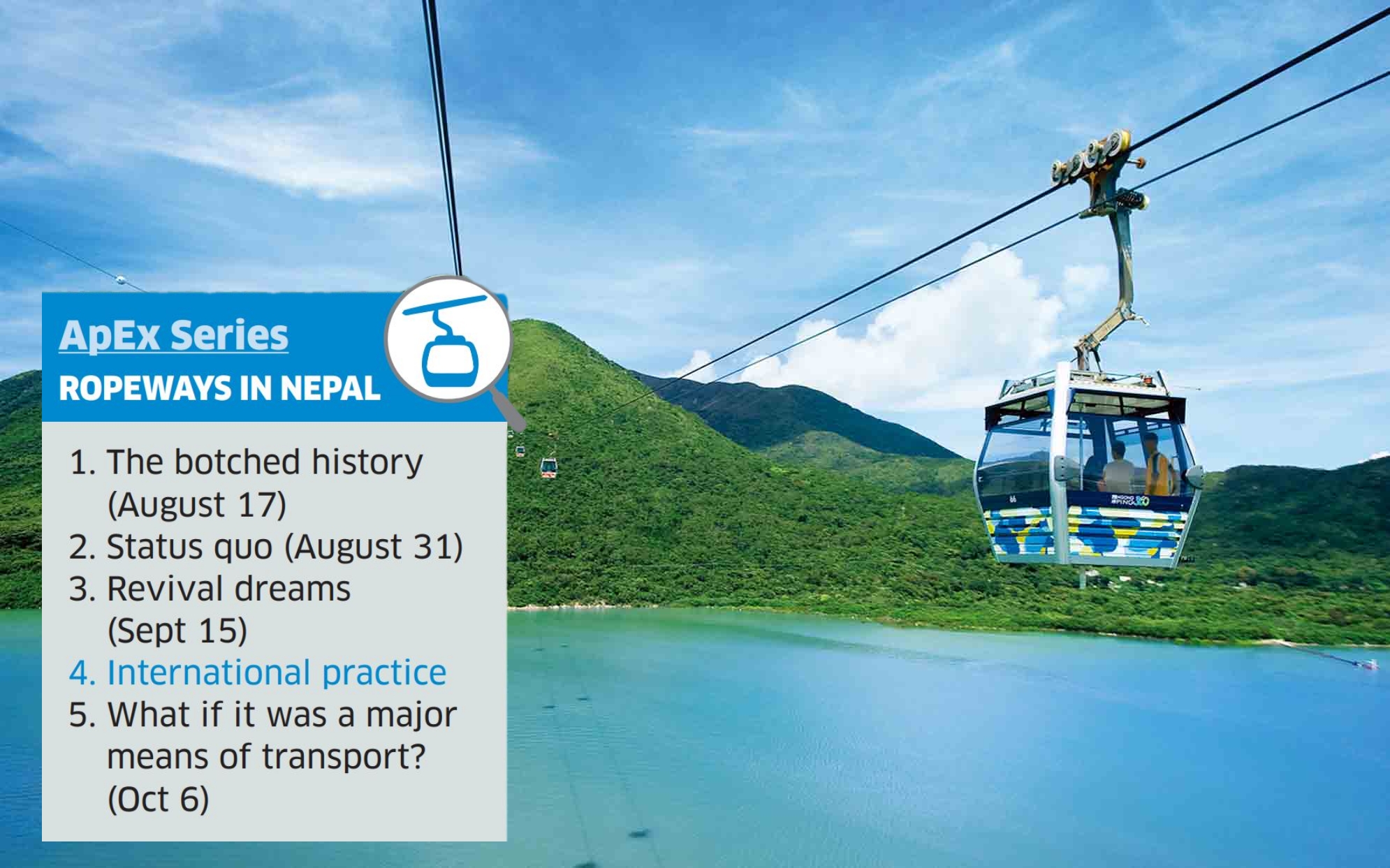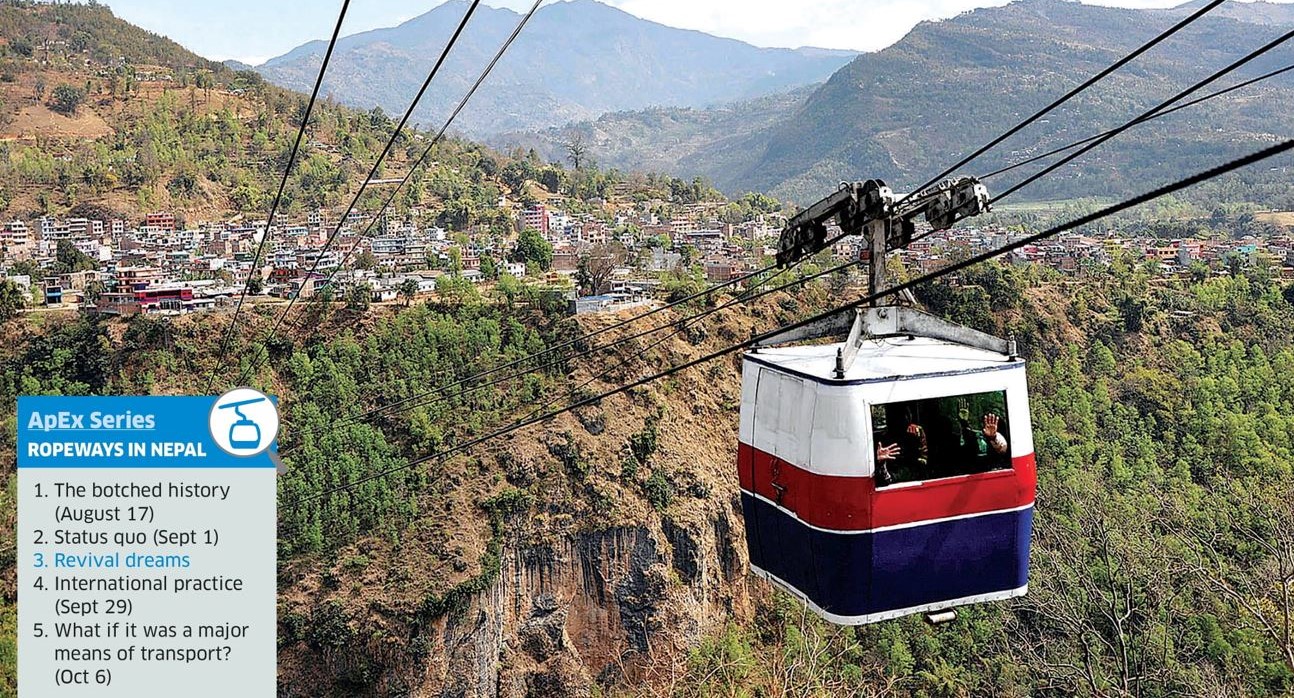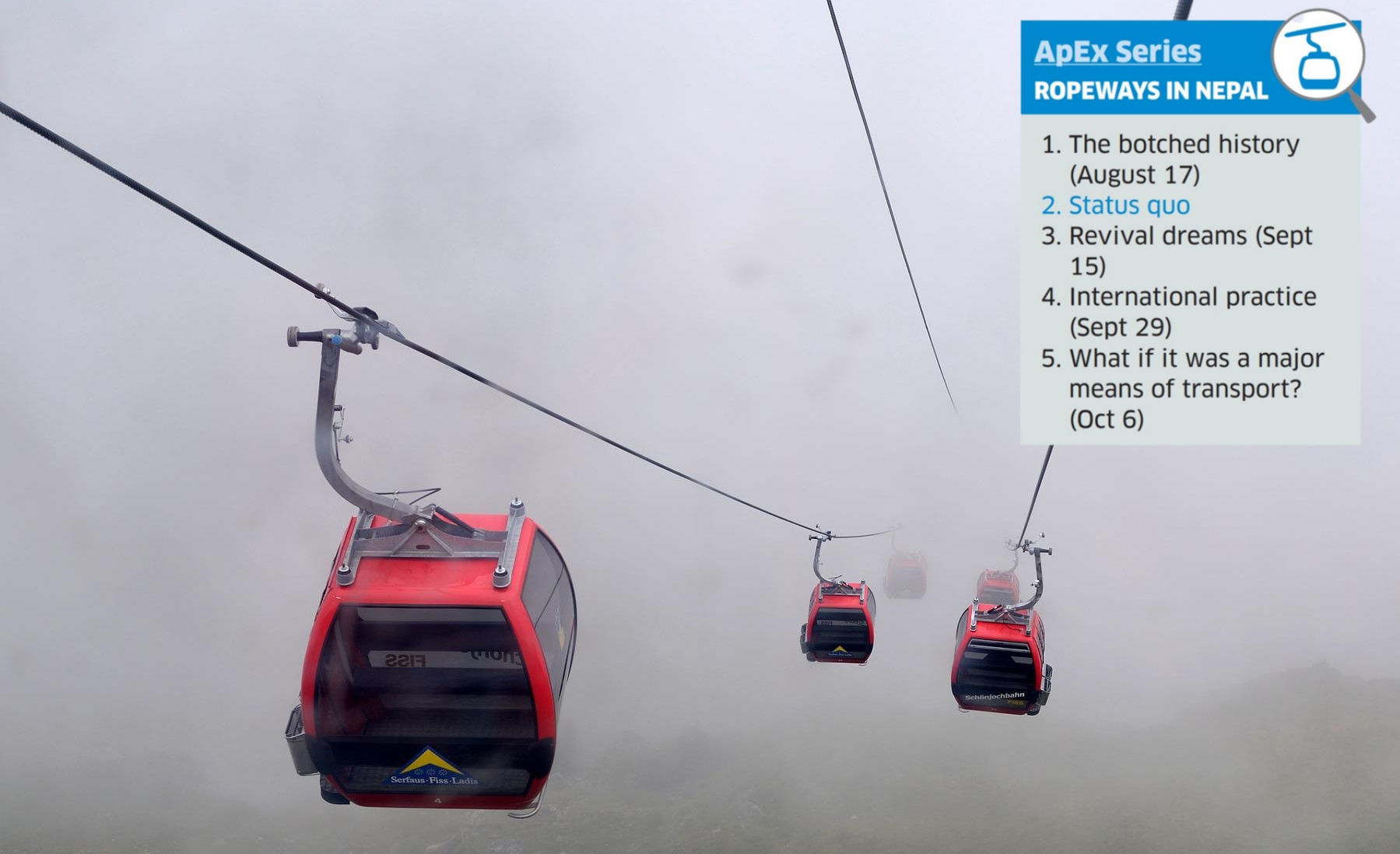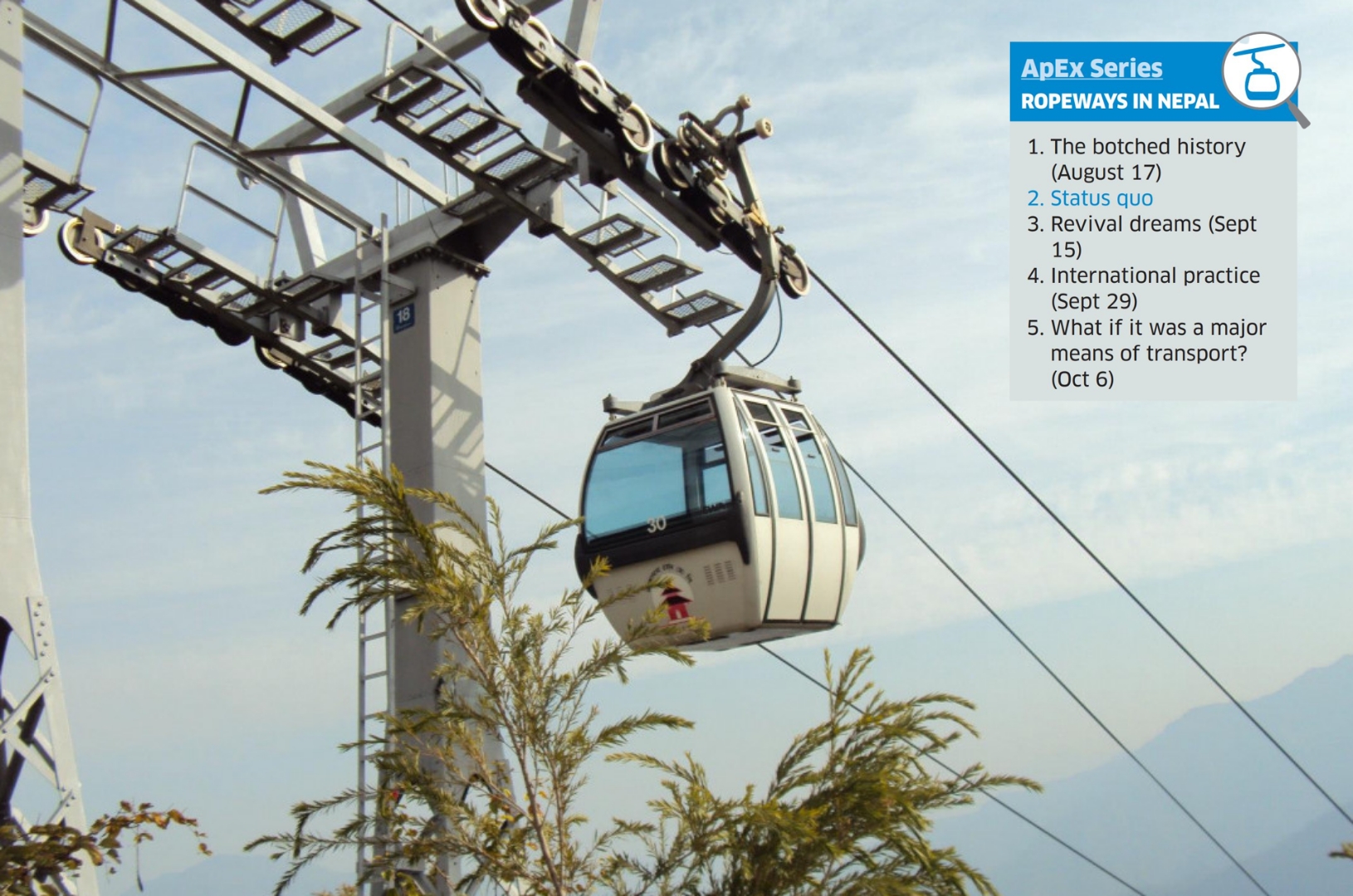How the ban came about andhow long it will stay in place
5 Government stand
APEX Series
MARIJUANA
5 Government stand
During my call on King [on] August 19, I reviewed with him various aspects of our bilateral relations against the background of several of the President’s priority concerns, including developmental assistance, human rights and narcotics. This message deals with our discussion on narcotics question. (A September 1977 telegram titled Audience with King Birendra-Narcotics sent by the then US Deputy Secretary of State Margaret P. Garfeld )
The highly confidential telegram addressed to the then US President Jimmy Carter and archived in the Public Library of US Diplomacy states the American interests in pushing for the criminalization of cannabis in Nepal and also shows the subtle diplomatic pressure applied by the US. Though a little ungrammatical, it is worth quoting at length.
Garfeld further writes: “I recalled that subject of narcotics was one which had been under discussion with HMG for some time. As cannabis grew wild in Nepal and its cultivation was difficult to control we were naturally concerned over its leakage into international market. We had accordingly welcomed GoN initiative last year to adopt legislation establishing controls and penalties and we had expressed hope that adequate enforcement machinery would follow. King interjected to say that this was his objective also…”
Even as the US had expressed its concern over illicit trafficking in hashish “as a matter of principle”, she writes, this problem did not impinge directly on US interests because very little of this narcotic reached the US from Nepal, as far as the embassy was aware. “However, there was a far more serious problem possibly looming ahead because we had received reports earlier this year of poppy cultivation in western Nepal together with other reports that the GoN was considering going into opium production, ostensibly to meet legitimate medical needs and for export.”
Garfeld then talks of how this subject had come up in her initial call on the prime minister at the time, who acknowledged that “one or two countries” had expressed interest in purchasing opium from Nepal and had confirmed the GoN was considering the matter. “The King nodded and said this was case, mentioning that the Soviet Union was one of the countries to which prime minister had referred.” Garfeld concluded by reminding the King of her president’s concern about the international narcotics control problem. “While I did not want to use a phrase which sounded threatening, especially in our first meeting, in all candor I had to tell him that if the GoN decided to go down this road this could have a very serious effect on our bilateral relations.”
The telegram, now available via WikiLeaks, indicates the kind of coercive American approach that was employed for the criminalization of cannabis in Nepal. The country subsequently enacted the Narcotic Drugs (Control) Act in 1976, banning the sale, cultivation and use of cannabis, after signing a related UN convention titled Single Convention on Narcotic Drugs, 1961. But at the time the government of Nepal was still reluctant to completely ban the production and use of cannabis.
Humoring the Americans
Dr Bhekh Bahadur Thapa, who was Minister of Finance at the time of the ban, says the US government threatened, if in not so many words, not to recognize Birendra Shah’s ‘authoritarian rule’ in order to force him to ban cannabis. “The Nepali government did not want to completely ban cannabis. But under American pressure, we started by destroying the crops in a few places and making nominal arrests—just to please the US,” he says.
In a confidential letter addressed to President Carter, which is clearly a follow-up to the meeting between the US Deputy Secretary of State Garfeld and King Birendra, the latter cautiously indicates his disapproval of the US-imposed cannabis ban and the American government’s interference in Nepali politics.
Dated 20 April 1978, the Letter from King of Nepal to President Carter reads, and again I quote at length: “The more I travel, the more the people I meet and talk to, the more I feel convinced that the demands of the vast majority of our people are for basic economic development. Only some weeks ago, I was travelling through those areas where people have specially been hit hard by the prohibition on the traditional cultivation of narcotic plants. It is not fair that hundreds of thousands of people should suffer by a stroke of a decision where their livelihood has been affected most deeply. I wonder if it was really what we wanted. This is where I believe our obligation comes in strongly…”
On the subtle American pressure over the ‘authoritarian nature’ of his regime, King Birendra responds: “Excellency, as a friend of the American people and as a Nepali who enjoyed the privilege of spending a year at Harvard, I wish you to be assured that the partyless Panchayat democratic system, which we profess, is developing in accordance with the wishes of the Nepalese people. An attempt to subvert it from outside will lead, I am sure, toward instability…”
Moving on to the present
Over four decades after the US championed a worldwide ban on cannabis and other narcotic substances, 33 of its states have legalized marijuana and others are following suit.
“Fortunately, when Nepal joined other nations in the good spirit of controlling and regulating psychoactive drugs, it did so with a reservation enabling it to produce and trade in marijuana,” says Jim Gierach, former Chicago prosecutor and former Acting Chair and Vice Chair of internationally recognized ‘Law Enforcement Against Prohibition’ or LEAP. “This farsighted ‘reservation’ enables Nepal to produce and export marijuana, benefiting Nepali GDP and its citizens, without breaching its international commitment regarding drugs.” Other activists for legal marijuana in Nepal also call upon the government to revoke the treaty and legalize marijuana.
But the said reservation is no more applicable, informs the Ministry of Home Affairs. “The reservation became obsolete in the 1990s and we cannot on moral grounds back down from the treaty without a formal process,” says Narayan Prasad Sharma Duwadi, a joint secretary at the ministry who oversees drug control. Duwadi informs that the government is aware of the lobby to legalize marijuana and adds that although the Narcotic Drugs (Control) Act, 2033 is in the process of being amended, the government is not making any special provisions for cannabis.
“We cannot blindly follow policy changes in the US and Canada and legalize marijuana here,” Duwadi says. The government might consider its medical benefits, like those being promoted by scientists in countries where marijuana is legal, the joint secretary adds, if such benefits are established by international organizations like the UN and the WHO. “The government priorities at present are prevention and intervention of drug abuse as the estimated number of identified drug users has reached 156,000.” Legalization without a proper framework could leave around five million Nepali youth vulnerable to addiction, Duwadi warns.
Dr Thapa believes it is already too late for Nepal to legalize marijuana. As the more developed countries have gotten far ahead on cannabis cultivation and created huge markets to exploit its benefits, Nepal will face tough competition. “Westerners initially came to Nepal for marijuana because it was banned in their home countries,” he says. “Now that they have easy access to it in their own countries, I don’t think they would come here for it. There thus seems to be little incentive in legalizing marijuana.”
In for the long haul
The ruling NCP federal lawmaker Birodh Khatiwada, a strong proponent of legal marijuana in Nepal, agrees that the process is going to be a long one. Yet he is hopeful. After he spoke of the need to legalize marijuana in the House of Representatives in February, the response has been pretty neutral, he says.
“Other lawmakers have not supported me yet, but the good thing is, I haven’t face much opposition either,” Khatiwada says. “What we have done is get the attention of the common people, intellectuals and some government bodies. This is a good start. Yet we must at the same time acknowledge that it will be some time before the House seriously debates this issue and considers a policy change”.
Vault of history IX :The plot thickens
Govind Narain had received officer training during the British rule in India. He was sent to Nepal precisely because he was extremely clever and active in matters of governance. After his stint in Nepal between 1951 and 1954 as King Tribhuwan’s advisor, he was appointed India’s defense and home secretary, as well as the chief secretary of Uttar Pradesh, the most populous Indian state. Later, he also became the governor of the southern Indian state of Karnataka.
King Tribhuwan had instructed his ministers to consult Narain, his advisor-cum-secretary, on state matters and all documentary work. “Govind Narain, ICS has been appointed as the secretary to the king. He will be undertaking such tasks as advising Nepal’s Public Service Commission. Secretary Govind Narain will have to be consulted on all the matters pertaining to the following rules…,” as per the Nepal Gazette.
Narain was authorized to look at the cabinet’s decisions and he was the one who prepared the king’s instructions to the cabinet. The monarch exercised his residual powers based on the recommendation of Narain, who also had the authority to arrange the king’s meetings with foreigners. Moreover, it was through his secretary that King Tribhuwan carried out public-relations exercises and social welfare activities. Not only that, Narain could also appoint palace officials and oversee their work and conduct.
Given the influence Govind Narain wielded, it was natural for Nepalis who aspired to political power to try to get close to him
A few months into Narain’s appointment, a three-member team led by N.M. Buch, another Indian civil servant, came to Kathmandu on 14 May 1952 to help reform Nepal’s bureaucracy. The ‘Buch Commission’ was authorized to oversee all government decisions, which deepened Indian bureaucrats’ involvement in Nepal’s ruling circles.
Given the influence Narain wielded, it was natural for Nepalis who aspired to political power to try to get close to him. They started fawning over Narain in the hope of getting coveted posts. People could get an appointment with King Tribhuwan only with Narain’s consent. Earlier, it was the Ranas who acted as gatekeepers to the monarch; now Narain played that role. Nepali politics and governance started being dominated by the triangular alliance between King Tribhuwan, his secretary-advisor Narain and the Indian ambassador in Kathmandu.
At the time, the ruling Nepali Congress was mired in infighting, with Prime Minister Matrika Prasad Koirala and his brother BP Koirala locked in a power struggle. Animosity between the Congress and other parties was also at a peak; they could not stand each other.
Rumor mills were churning out speculations that the infighting was being fueled by Govind Narain and the Indian ambassador, both of whom were trained under the British rule that followed a divide and rule policy. Such speculations were not without foundation; it was clear as daylight that those close to the two had become ministers. There also are historical accounts of Nepal’s forests being exploited by Indian contractors.
The next column in the ‘Vault of history’ series will cover the war of words between the Congress and Dharma Ratna Yami, a deputy cabinet minister
A giant step towards ending Nepal’s ‘India-locked’ status
2 The 2016 transit and transport treaty (April 19)
APEX Series
EVOLVING NEPAL-CHINA RELATIONS
1 Post-1950 turning points (April 5)
2 The 2016 transit and transport treaty (April 19)
3 China’s relations with political parties (May 3)
4 Defense ties (May 17)
5 Nepal and BRI (May 31)
The four-month-long blockade imposed by India in 2015-16 was a wake-up call for Nepal to diversify its India-centric trade and transit arrangements. Political parties as well as the general public were of the view that there should be no delay in pushing for transit access for third-country trade via China.
The then government led by CPN-UML’s KP Sharma Oli was determined to strike an agreement with China. PM Oli had dispatched then Foreign Minister Kamal Thapa to Beijing for talks on a possible transit treaty between the two countries. But reaching an agreement was not easy.
First, China wanted to avoid projecting the transit agreement as a response to the Indian blockade. China was seeking assurances that Nepal would not backtrack from negotiations after the end of the blockade and a rapprochement with India. Second, Nepal also needed to convince India that a treaty with China was not targeted against it.
In December 2015, Thapa held talks with high-level Chinese officials and reached a tentative agreement. “We tried to persuade India that the treaty was not aimed against it and that China was also obliged to provide port access to a landlocked country like Nepal,” says a senior official involved in the negotiations.
India did not object to the treaty, at least not openly. But some Indian officials expressed displeasure and argued that transit from Chinese ports is not feasible for Nepal due to distance- and cost-related issues. “We signed a treaty with China not only because of the Indian blockade, but largely because it was a geopolitical necessity for Nepal. The treaty remains a fundamental survival strategy for Nepal,” says former minister Thapa.
Earlier, in the 1960s King Mahendra had introduced the approach of a balanced foreign policy
The ’89 itch
There had been efforts to diversify trade and transit following the 1989 Indian blockade as well. “In a cabinet meeting at the time, King Birendra had made two important proposals, namely strengthening national capacity for storing essential items for three months, and looking north for alternate transit routes. But they were totally forgotten after the restoration of multi-party democracy in 1990,” recalls Thapa, who was also a minister in the royal cabinet of 1989.
Earlier, in the 1960s King Mahendra had introduced the approach of a balanced foreign policy, ending the era of ‘special relations’ with India. Nepal was a strong advocate for the rights of landlocked countries. Although there were talks about diversifying trade even back then, Nepal had no substantial discussion with China about alternate international transit facilities. But after Nepal started making noise about diversification, India became serious about providing it with better trade and transit facilities. In 1966, India provided separate space at the Kolkata port for cargo to and from Nepal.
But Nepali politicians paid no attention to trade diversification after 1990, which further deepened our dependence on India. Only after the months-long agonizing blockade of 2015-16 did the issue resurface, ultimately leading to the signing of Nepal-China Transit and Transport Treaty, which has been hailed as an historical accord.
No progress in implementing the treaty was made during the premierships of Pushpa Kamal Dahal and Sher Bahadur Deuba. Negotiations on giving a final shape to the treaty protocol were initiated only after the left alliance won a thumping victory in the 2017 elections and Oli once again became prime minister. Now, preparations are underway to sign the treaty protocol during President Bidhya Devi Bhandari’s upcoming visit to China starting April 24.
China has agreed to open for Nepal seven transit points—four sea ports (Tianjin, Shenzhen, Lianyungang and Zhanjiang) and three land ports (Lanzhou, Lhasa and Xigatse)—for third-country export and import. Under the agreement, China will be obliged to permit trucks and containers ferrying Nepal-bound cargo to and from Xigatse in Tibet. The two sides have also agreed that Nepal would have access to Chinese territory from the six checkpoints.
From us, not them
Following this trade and transit agreement, India has offered additional ports to Nepal, arguing that the Indian ports are more cost-effective than the Chinese ones. In 2016, India gave Nepal the right to use the Visakhapatnam port for third-country trade, in addition to the Kolkata port which Nepal had been using for a long time. The Indian side has frequently highlighted the additional benefits Visakhapatnam offers to Nepal.
Although Nepal and China have signed the transit treaty, it is a hard reality that Chinese ports are much farther from Nepal than Indian ports, the nearest one being about 4,000km from Kathmandu. By contrast, the distance between Visakhapatnam and Kathmandu is about 1,500km.
Similarly, the driving distance between Kolkata and Raxaul is 748 km. Of late, India has also offered Nepal the use of the Dhamra seaport in the state of Odisha. Nepali officials have conducted a preliminary feasibility study of the Dhamra port, which is about 956km from Biratnagar. Another option is the Chittagong seaport in Bangladesh.
Onus on Nepal
Experts argue that although Chinese ports are far, Nepal can still benefit from their use in the long run. They say the current burden of cost and distance could be significantly reduced with proper infrastructure in place. Efforts are underway to build road and railway connectivity with China. Negotiations are underway for a railway line between Kathmandu and Keyrung—President Bhandari is reportedly pushing this issue in her discussion with President Xi in Beijing—on what is the traditional trade route between Nepal and its northern neighbor. Infrastructure development along this route, however, started taking place only in recent decades.
Nepal and China are also holding talks about the possibility of reopening the border at Tatopani, which has been closed since the 2015 earthquake. The Rasuwagadi-Kerung border point, currently the only operational trade route between Nepal and China, has been developed as an international crossing point with the goal of connecting China with the larger South Asia.
As such, when the Tatopani border comes back into operation, Nepal will have two viable trade routes to China. The trade and transit treaty between Nepal and China has, at least in principle, put an end to India’s monopoly on Nepal’s supply system.
Although the agreement is unlikely to reduce Nepal’s dependence on India in the near future, it will come in extremely handy in case the southern neighbor imposes another blockade. With a viable trade route open with China, a blockade on Nepal might not even be an option on the table.
After the signing of the transit treaty with China, India has given Nepal more options. Ideally, Nepal can now choose the ports—both Indian and Chinese—that are most cost-effective. There are obvious reasons why two-thirds of Nepal’s trade is with India: geographical proximity and a well-connected border. Officials, however, say that highly-profitable trade with East Asian countries like Japan and South Korea could be carried out via Chinese ports.
Vault of history VIII : Indian advisor, legitimized
The end of the dynastic Rana reign suddenly opened the door to Kathmandu’s ruling circle for the Indians, who entered Nepal as legitimate advisors and military personnel in the name of strengthening governance and security. The military mission was here to modernize Nepal’s army and to block the possibility of a counter-revolution by the Ranas. At the same time, engineers and businessmen came in to build infrastructure. In other words, Indians held enormous sway across the board, which instead of smoothing out Nepal’s transition to a democratic system sowed the seeds of mistrust.
India’s role in the downfall of the Rana regime was no doubt significant. The 1951 agreement that established democracy in Nepal was signed in Delhi while the Nepali Congress was revolting against the Rana oligarchy and King Tribhuwan was living in exile in India. During the twilight of the Rana rule, India had offered refuge and four months of magnificent hospitality to King Tribhuwan, who by then had lost his crown to his grandson Gyanendra. Naturally, Tribhuwan was beholden to India for getting his crown back.
Fear of political regression had made King Tribhuwan as well as Nepali Congress think of Indians as friends
The Indians had also put in place policies and conditions that compelled Tribhuwan to repay them for their support. India sent a high-level officer to Nepal as the monarch’s legitimate advisor and secretary. Foreigners wanting to visit Nepal had to get permission from the Indian embassy in advance; they could not get a visa without Indian approval.
The palace and Nepali political parties were terrified of political regression—and not entirely unjustifiably. The Rana-led Gorkha Dal and its spying networks were engaged in creating an anti-democratic environment. Kathmandu was alarmed by K.I. Singh’s rebellion and the rallying-cry of “The Delhi agreement is a deception”.

The fear of regression had made King Tribhuwan as well as the Congress consider the Indians as friends and the Ranas as foes. Treated like a friend by both the palace and the political parties, India naturally extended a ‘helping hand’. Nepal could not see the iron hand in the velvet glove.
Nine months after the establishment of democracy, King Tribhuwan on 24 October 1951 appointed Govind Narain, an Indian civil servant, as his secretary and advisor, providing him with plenty of authority. Unlike other appointments which were endorsed by government secretaries, Tribhuwan himself had signed off on the devolution of authority to Narayan, who was referred to as ‘the royal secretary’ as well as ‘the legitimate advisor’.
His appointment, with Tribhuwan’s signature (as TB Shah, Shree Panch Maharajadhiraj), is mentioned in Nepal Gazette published on 29 October 1951. In effect, the Indian bureaucrat was authorized to oversee Nepal’s governance. His role was not only widely discussed but had also attracted quite a bit of controversy in Nepal.
The next column in the ‘Vault of history’ series will discuss Govind Narain’s prerogatives and activities in Kathmandu




















